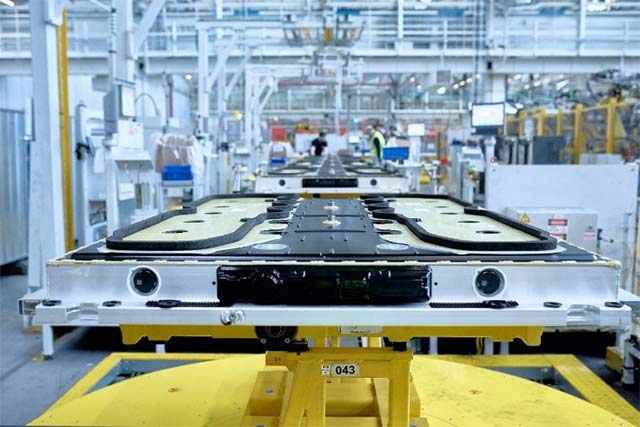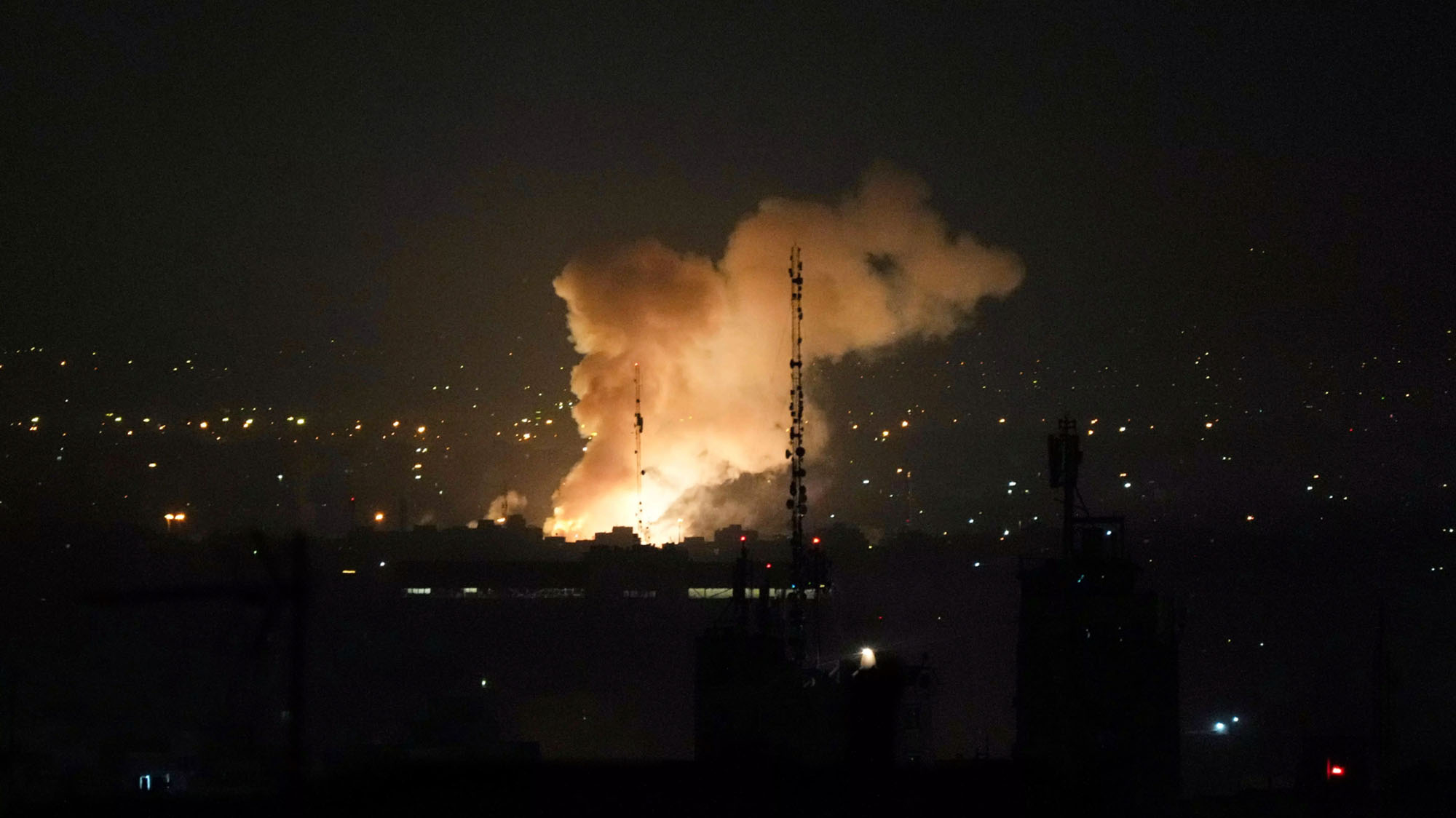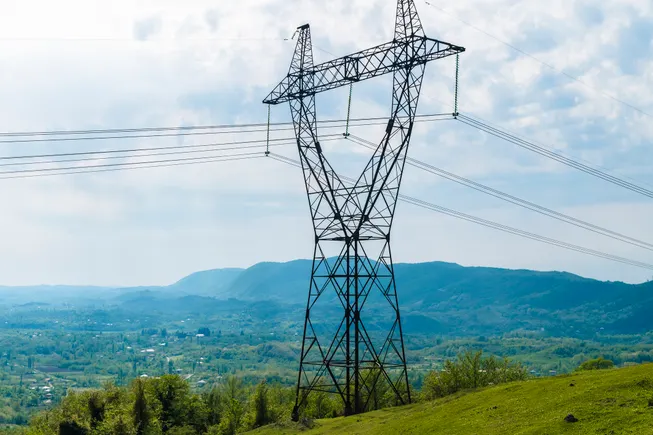Nine steps to make Golden Dome a true success
In this op-ed, former NNSA no. 2 Frank Rose lays out a series of recommendations to make Golden Dome actually succeed.


US President Donald Trump speaks alongside Secretary of Defense Pete Hegseth in the Oval Office at the White House on May 20, 2025 in Washington, DC. President Trump announced his plans for the “Golden Dome,” a national ballistic and cruise missile defense system. (Photo by Chip Somodevilla/Getty Images)
Last month, President Donald Trump announced plans for a “Golden Dome” missile defense system to shield the US homeland from evolving air and missile threats. Building on his January 2025 executive order, the initiative aims to expand current defenses while exploring advanced technologies like space-based interceptors. The proposal comes amid growing concern over missile and drone threats highlighted by recent global conflicts.
While the initiative includes promising elements — such as enhanced sensor networks and investments in new and emerging technologies — it also raises serious risks. In particular, the shift toward targeting Russia and China’s strategic deterrents, and the potential deployment of space-based missile defense interceptors, is a game changer on a geopolitical level. In addition, there are practical concerns about how to produce the number of interceptors needed to fulfill a Golden Dome vision.
If not managed carefully, the initiative could destabilize global security, strain budgets, and jeopardize the long-term sustainability of outer space.
Based on my 30 years of experience working on missile defense issues at the Pentagon, the House Armed Services Committee, and the State Department, I offer several key recommendations to Congress and the Trump administration regarding the development of the next-generation missile defense system.
- Replenish and Expand Theater Interceptor Inventories. The rapid depletion of US and allied missile interceptor stockpiles — particularly Patriot and SM-3 — due to conflicts in Ukraine, Israel, and other regions underscores a critical vulnerability. Congress should authorize multi-year procurement contracts to stabilize the industrial base and ramp up surge production. Investments should focus on workforce training, critical supply chains, and strategic materials. And at a strategic level, the Department of Defense should also expand pre-positioned stockpiles in Eastern Europe and the Indo-Pacific to enable swift response to crises without having to draw on Golden Dome-related stocks.
- Accelerate Deployment of the Next Generation Interceptor (NGI). The NGI program is designed to replace the legacy Ground-Based Midcourse Defense (GMD) system with vastly improved discrimination, tracking, and multi-object kill capabilities. Under Golden Dome, NGI should become a priority. The Missile Defense Agency should be granted stable, long-term funding and streamlined acquisition authorities to avoid bureaucratic delays. Early deployment sites in Alaska and California should be modernized to accommodate NGI infrastructure. The program should also prioritize testing against hypersonic glide vehicles and complex decoy environments.
- Enhance Global Sensor Architecture. Persistent, high-fidelity tracking is foundational to missile defense. The US must invest in a next-generation sensor architecture, including the Hypersonic and Ballistic Tracking Space Sensor (HBTSS), Overhead Persistent Infrared (OPIR) satellites, and next-gen early warning radars. Ground- and sea-based sensors in Europe, the Pacific, and the Arctic should be upgraded for higher-resolution tracking and integrated into a single battle management system with real-time data fusion capabilities.
- Invest in Emerging Technologies. To break the cost-exchange trap, the US must push for breakthrough tech like high-energy lasers, high-power microwaves, and autonomous AI interceptors. This is feasible now, with Israel recently having marked the first official intercept of its Iron Beam laser defense system. Prototyping under DIU and DARPA in these categories should be expanded, aiming for operational deployment by fiscal 2028. These technologies can provide low-cost, scalable defense against drones and swarms.
- Develop and Operationalize Left-of-Launch Capabilities. Left-of-launch approaches aim to disable or disrupt missile threats before they leave the ground. Cyber operations, signal jamming, spoofing, and sabotage of command-and-control infrastructure are all viable tools. US Cyber Command and intelligence agencies must develop dedicated kill chains for missile systems, particularly in North Korea and Iran, and integrate these capabilities into regional defense planning. Legal authorities for preemptive cyber operations must also be reviewed and clarified.
- Strengthen Allied Integration and Burden Sharing. Building interoperable architectures with allies is both a strategic and economic imperative. US missile defense should prioritize joint development and deployment with partners such as Israel, the United Arab Emirates, Japan, and NATO. Standardizing data protocols, radar software, and battle management interfaces will increase shared situational awareness. The US should also expand Foreign Military Sales of SM-6 and THAAD, and push for coproduction agreements to deepen industrial ties and expand production capacity.
- Preserve Strategic Deterrence as the Cornerstone of National Defense. Missile defense, however advanced, is not a substitute for the fundamental deterrence provided by the US nuclear triad. Therefore, the US should fully modernize the nuclear triad —Sentinel ICBMs, B-21 bombers, LRSO cruise missiles, and Columbia-class subs — and update the Department of Energy’s nuclear infrastructure. Homeland missile defense should remain focused on limited threats; deterring peer adversaries depends on a credible and survivable nuclear triad.
- Approach Space-Based Interceptors with Caution. While space-based interceptors offer theoretical boost-phase defense, technical and geopolitical barriers remain significant. DoD should continue R&D on these systems, including directed-energy weapons, but deployment should only follow rigorous feasibility, cost, and geopolitical analysis. That analysis should also consider orbital debris risks and adversary countermeasures carefully.
- Champion the Development of Outer Space Norms. Despite growing threats from Russian and Chinese anti-satellite (ASAT) capabilities, the United States must reaffirm its leadership in promoting responsible space behavior. The Trump administration should build on the Artemis Accords and the US moratorium on debris-generating ASAT tests by spearheading international efforts to establish norms that promote transparency, debris mitigation, and long-term space sustainability. Advancing these rules through diplomacy will not only reinforce US alliances but also shape a rules-based order in space that reflects American interests and values — before adversaries define it on their terms.
President Trump’s “Golden Dome” initiative reflects a bold vision for US missile defense amid rising geopolitical threats and accelerating technological change. While the plan rightly emphasizes the enhancement of sensor capabilities and the investment in emerging technologies, it must avoid overreach — particularly with costly and controversial proposals like space-based interceptors.
Such systems are not only technologically immature and prohibitively expensive, but risk destabilizing global security dynamics and degrading the space environment. With US nuclear modernization already approaching $1 trillion, policymakers must prioritize investments that offer clear, achievable gains.
Above all, missile defense should remain a complement — not a substitute — for the US nuclear deterrent, which remains the bedrock of national security. In an age of multiplying threats, constrained resources, and complex global challenges, the United States must build smarter, not just bigger. America’s defense posture must be innovative yet disciplined — grounded in sober analysis, not grandiose promises.
That is the true measure of 21st-century national security leadership.
Frank A. Rose is President of Chevalier Strategic Advisors, a firm specializing in geopolitics and national security. He previously served as Principal Deputy Administrator of the US National Nuclear Security Administration, Assistant Secretary of State, a policy advisor in the Department of Defense, and as a professional staff member on the House Armed Services Committee.





















































































































































